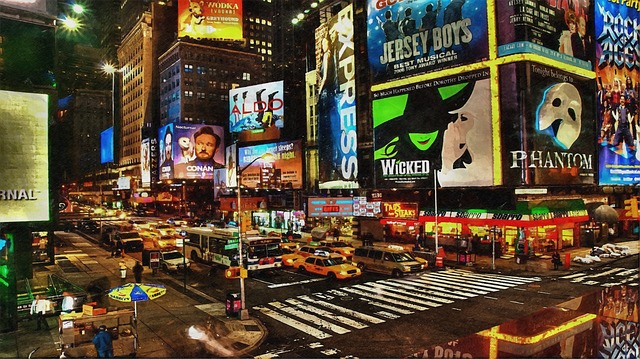
In the central areas of large cities, graphic advertising usually abounds.
Advertising is called an advertisement that aims to attract the attention of potential users, clients, buyers, etc. The graphic , meanwhile, is that which is represented through lines, signs or figures.
Evolution of display advertising
For a long time, the idea of graphic advertising referred to the presentation of static images on a flat surface for advertising purposes . With advances in technology , however, the concept expanded.
Nowadays it is understood that graphic advertising is a visual communication that uses photographs , drawings , typographic fonts , colors and other tools to make something known. Texts can be part of this type of advertisement.
Lithography and printing were key in the beginning of graphic advertising. Over the years, these ads were installed in various media.
Where to find it
We can find graphic advertising in most newspapers and magazines . Companies pay publications to have a presence on their pages and disseminate their products and services.
Display advertising is also done with catalogs , brochures , and other printed materials that are mailed or handed out to passers-by. Another possibility is that graphic advertising appears on public roads through posters and billboards .
Unlike radio or television advertising, graphic advertising is not ephemeral: the person can observe and analyze the message as long as they want, and can even see the advertisement again as many times as they want. Experts recommend that messages be concrete and easy to understand to ensure impact.
As for digital advertising , it can combine characteristic resources of graphic advertising, radio advertising and television advertising, since it gives rise to the reproduction of static images, video and audio, either individually and isolated or combined. In short, digital advertising is so far the most complete and evolved option, which covers all of the above and adds new possibilities.
The message
As mentioned above, the message of a display advertisement must be easy to understand. This is applied taking into account the target audience, so that there is usually part of the population that is not included in the equation; that is, whose ability to understand is not relevant for the company.
Let's see this through an example. While a display advertisement for a fruit-flavored soft drink may target people of all ages, an alcoholic beverage will leave out minors, and perhaps also the elderly. In this way, the creative team in charge of devising the graphic part and the text that accompany the advertisement can use images and expressions that cannot be understood by children or adults without this negatively affecting its performance .

On the Internet we come across hundreds of advertisements every day.
The persuasion
Another of the fundamental points of advertising in general, which is not absent from the graph, is persuasion . Advertisements must convince the public of the need to purchase a product or service, and, even more difficult, they must achieve this almost instantly.
Generally, graphic advertising is located at strategic points in the city, in a printed medium or on a website, to surprise people, generate the need to invest their money in the proposal and get them to go as soon as possible to complete it. the acquisition. In the material world, a soft drink advertisement works best near a store that sells soft drinks, especially in hot weather. The idea is that the potential customer thinks "it's true that I'm very thirsty: I'll buy this soft drink."
